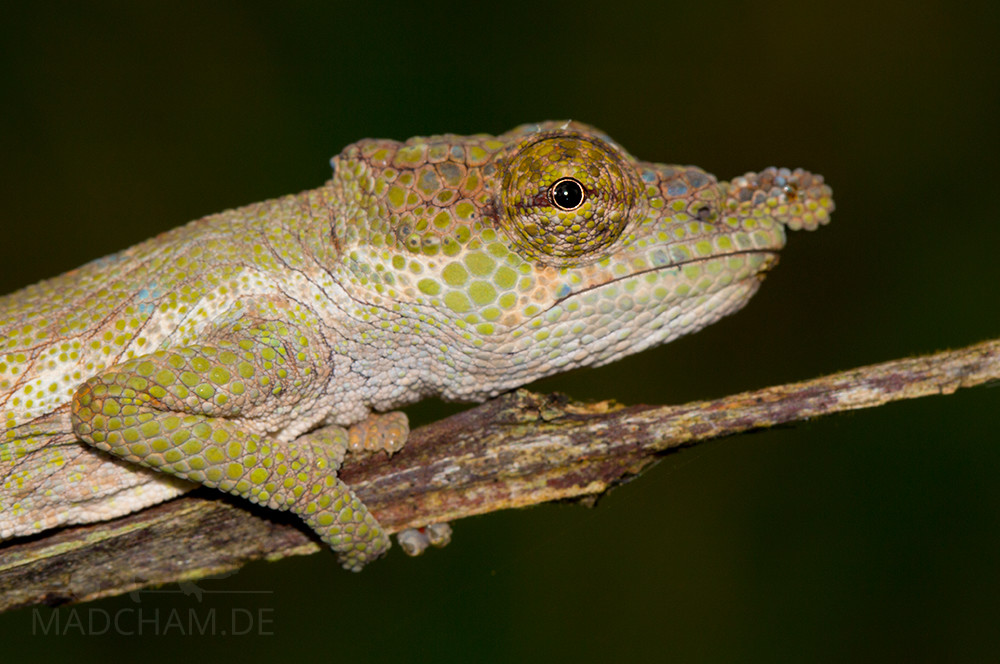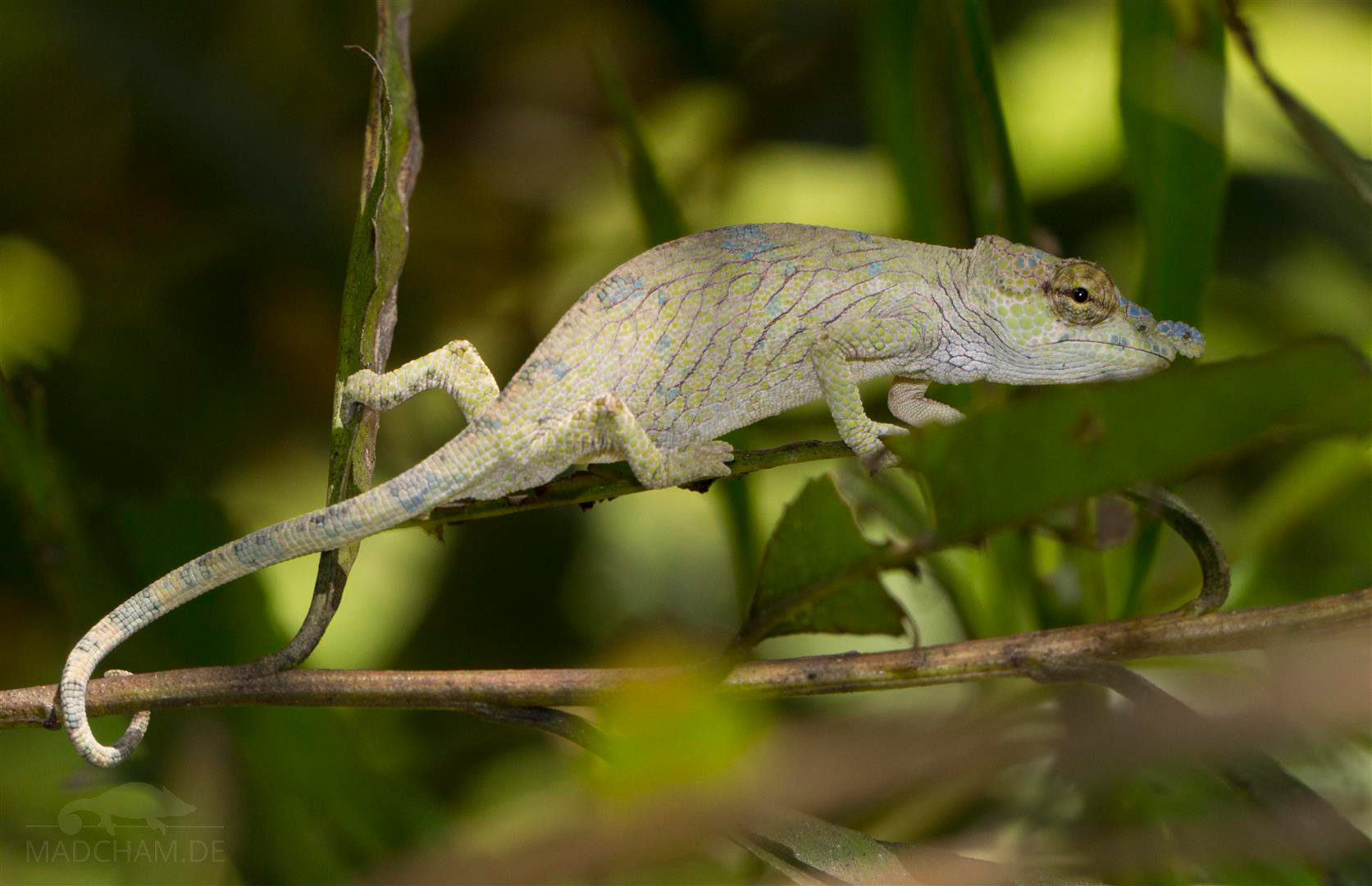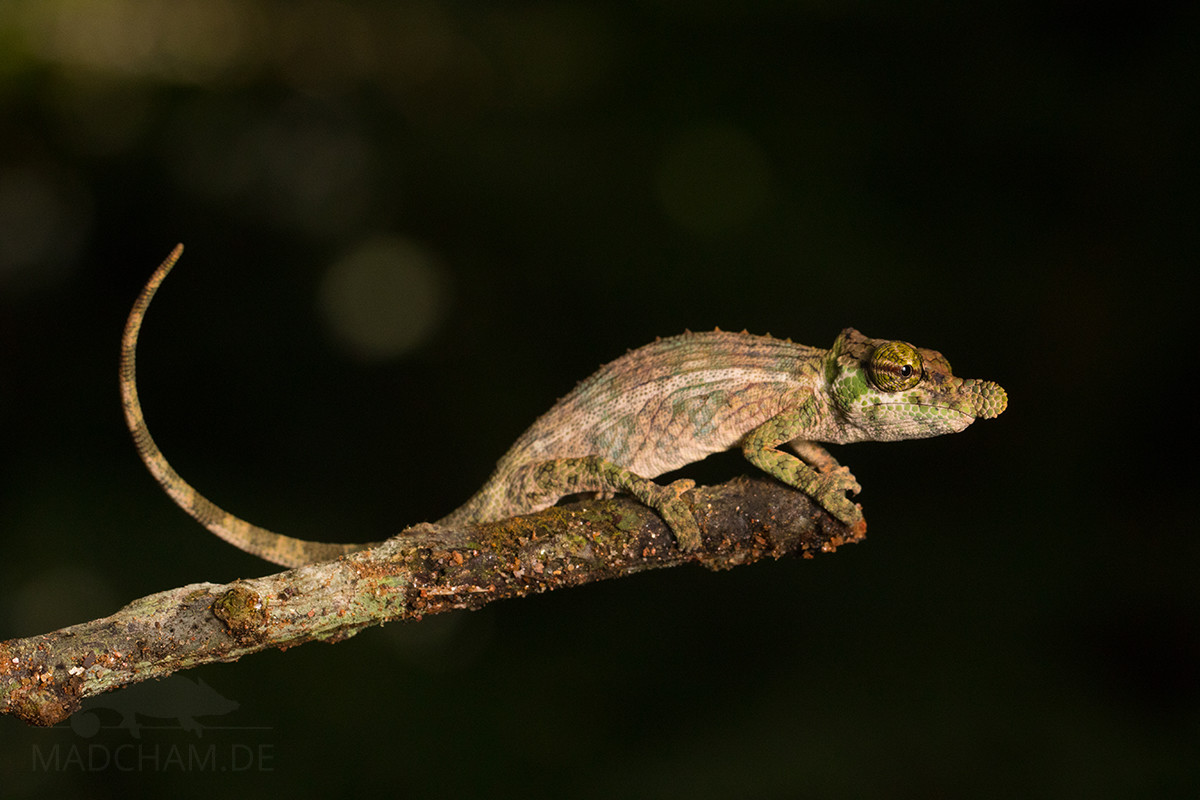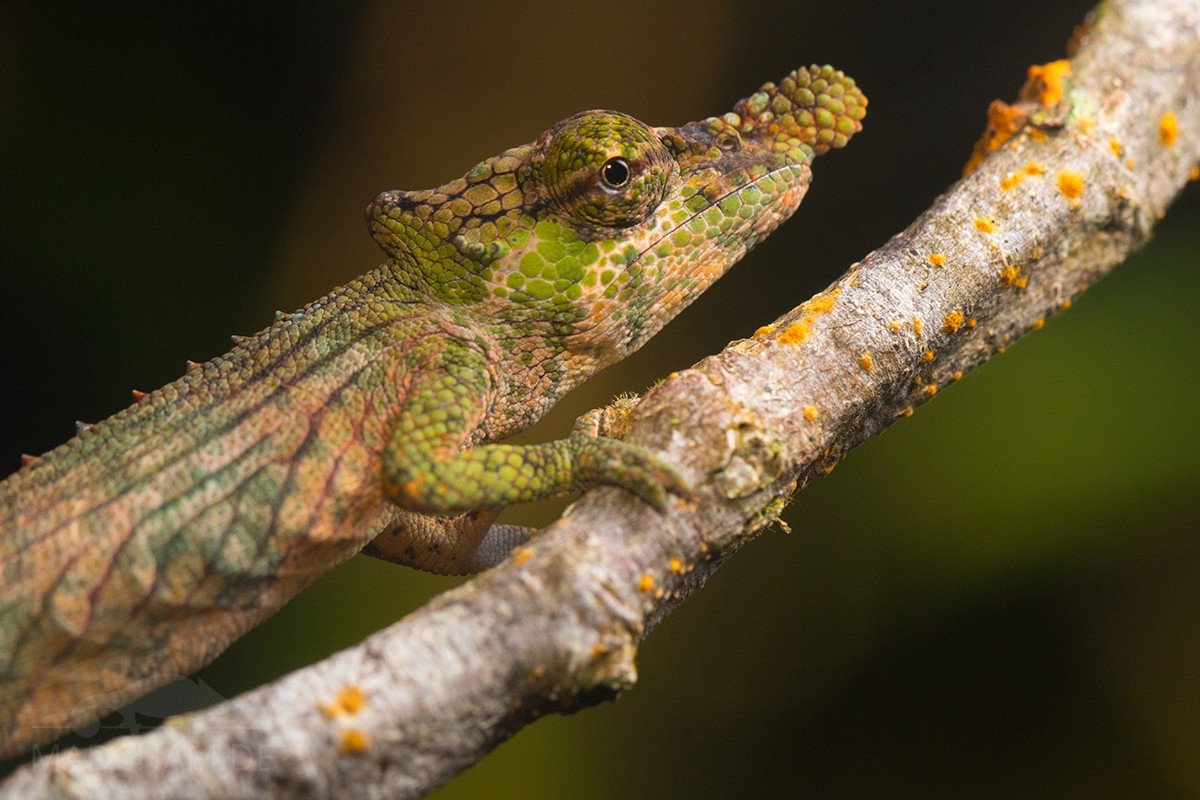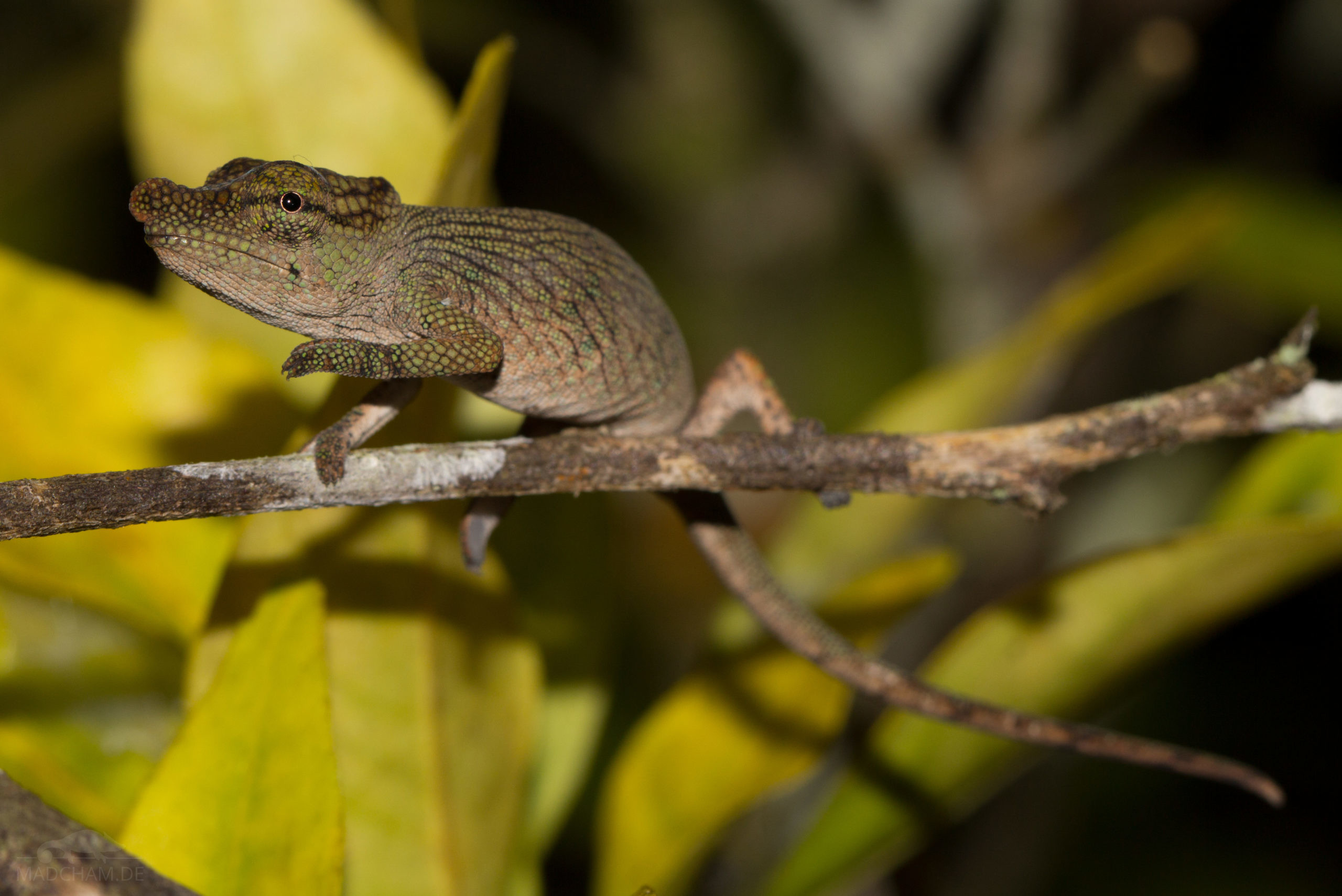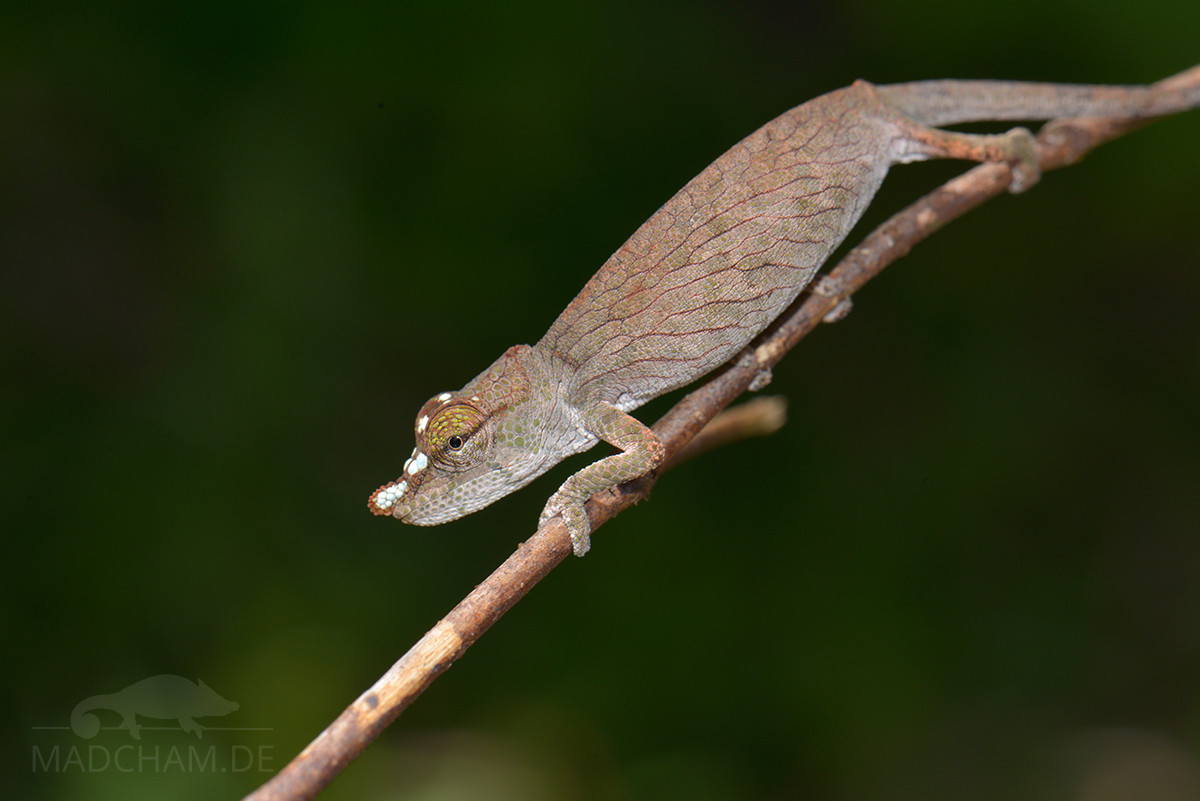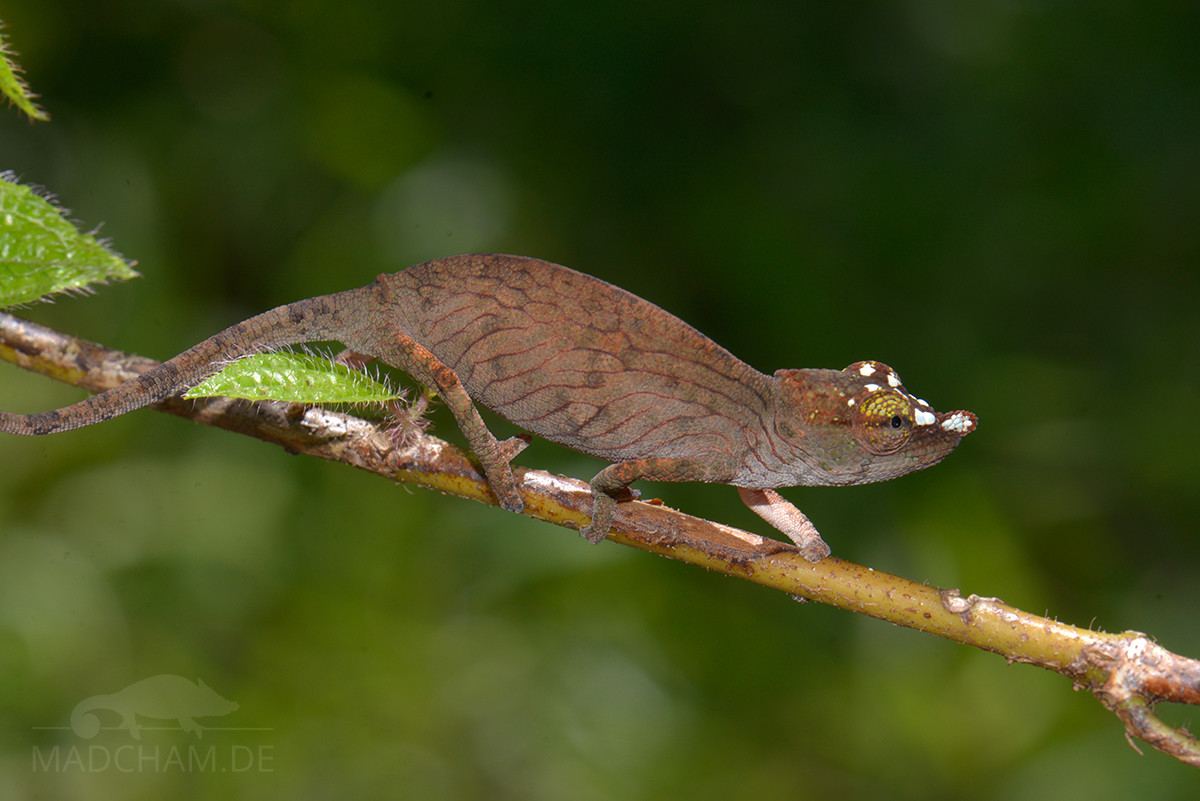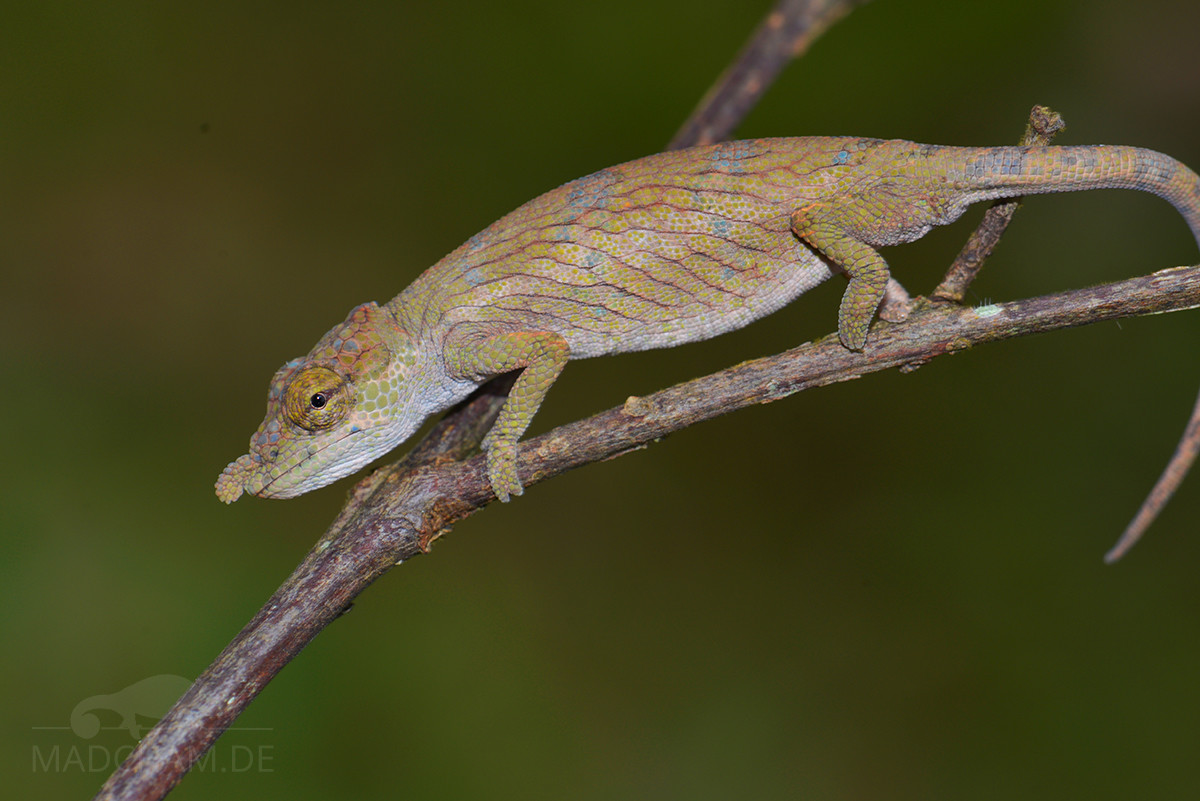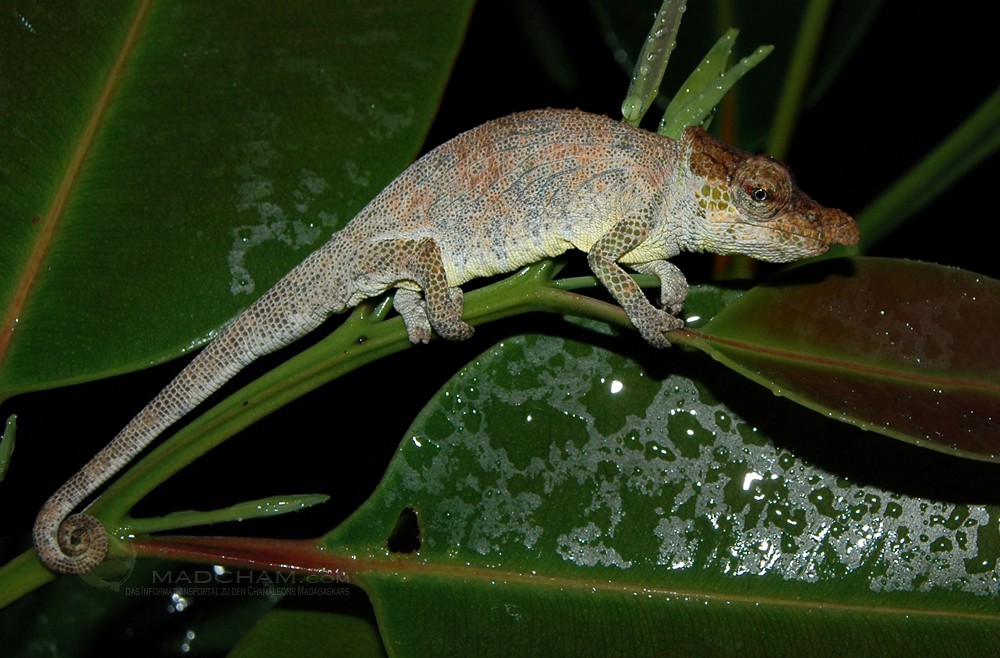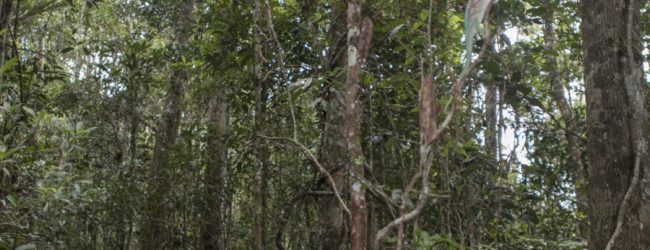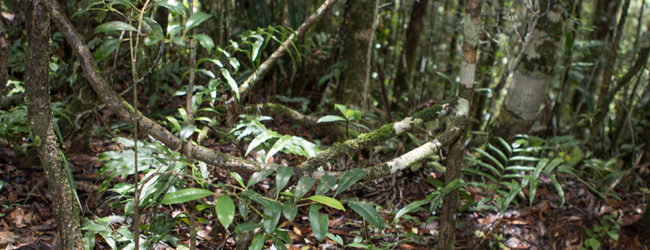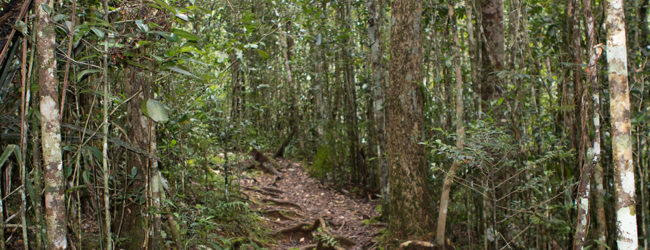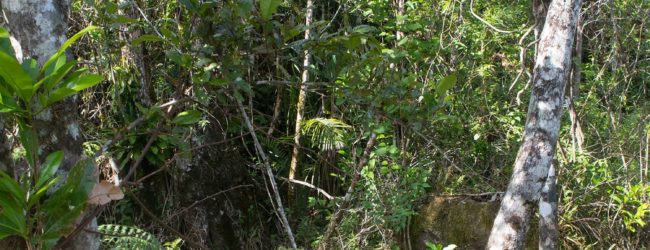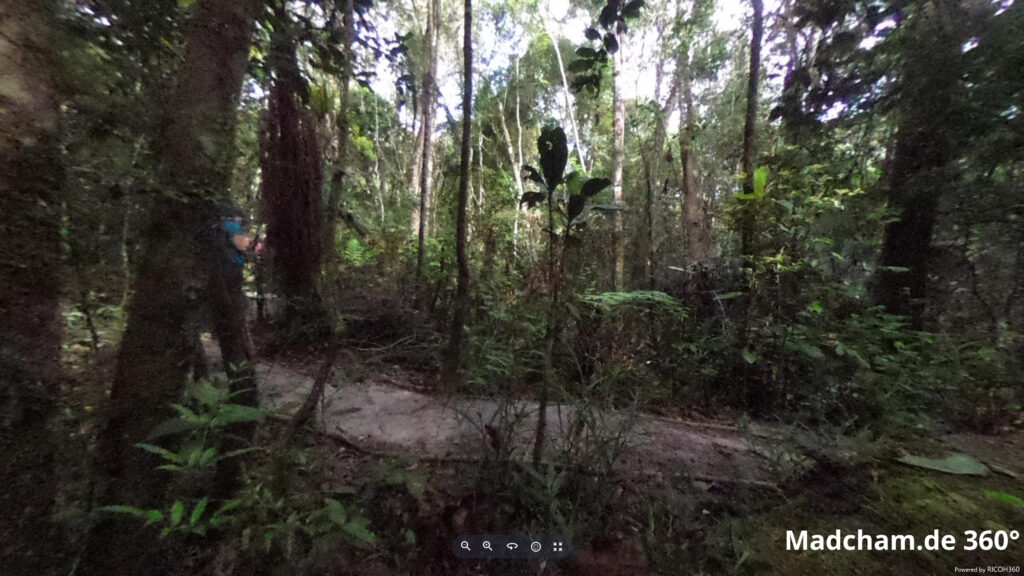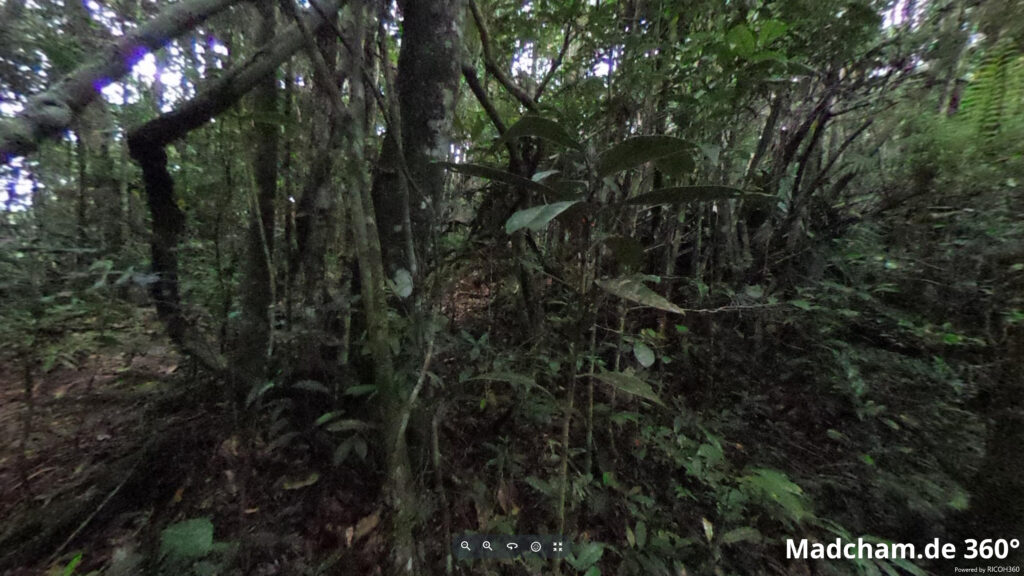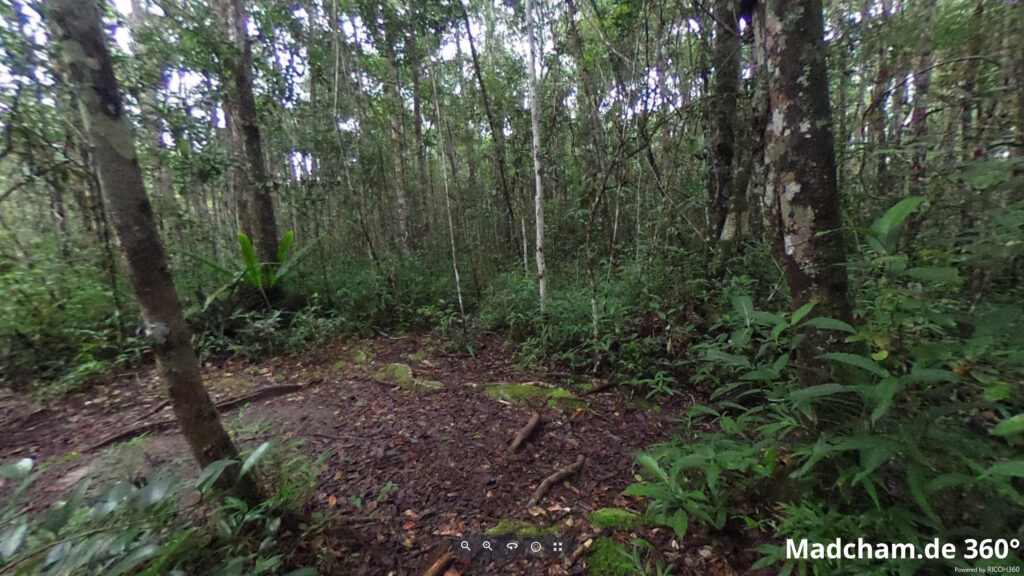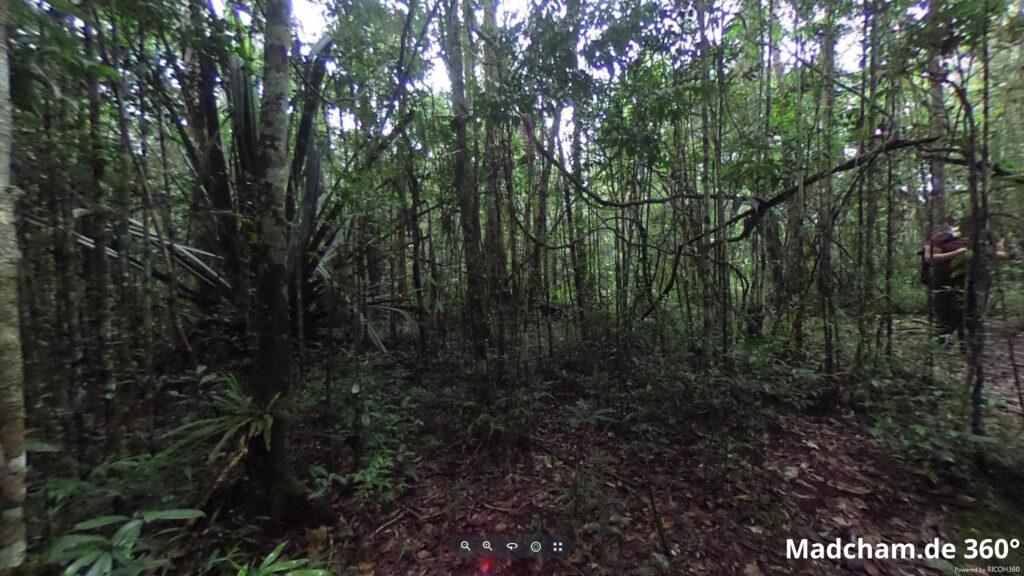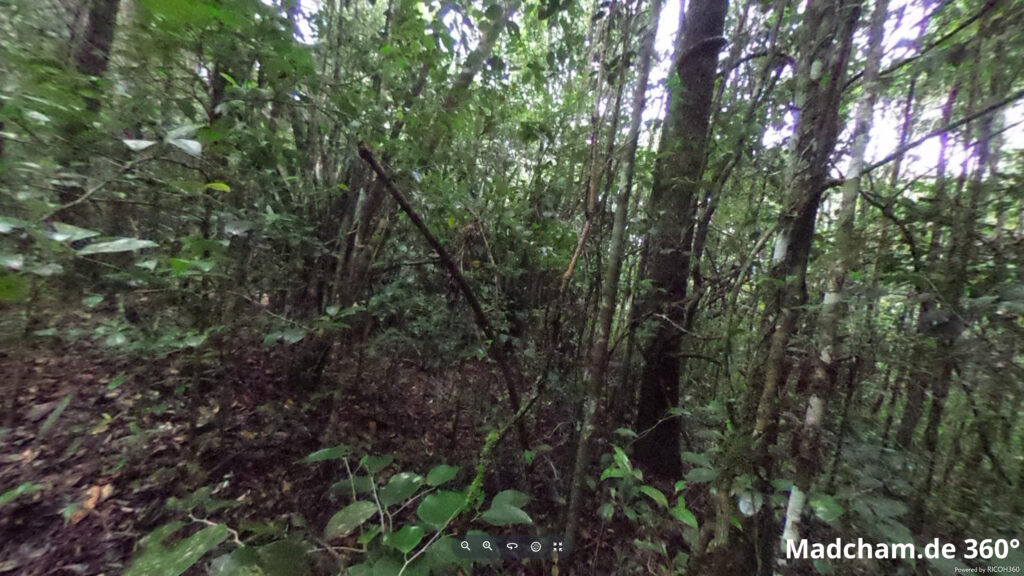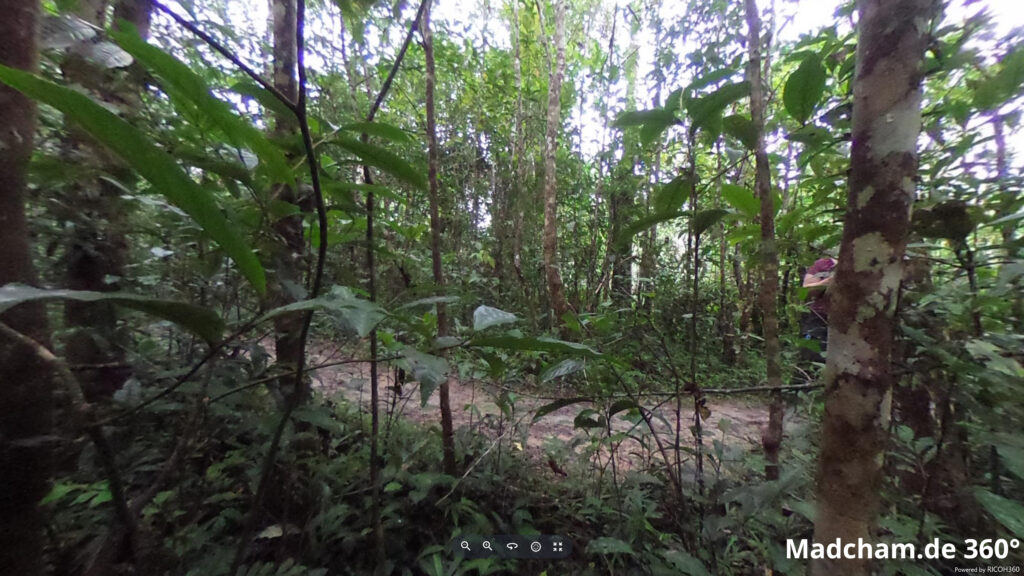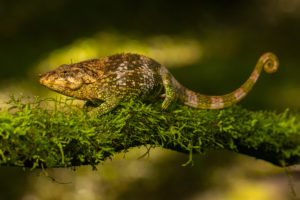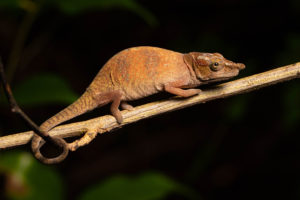No legal export possible
Quotas under the former species name Calumma nasutum can be found here
First description:
Glaw, Agne, Prötzel, Gehring, Köhler, Preick, Ratsoavina, Straube, Wollenberg Valero, Crottini & Vences, 2025 ![]()
Origin of the species name:
Frank Glaw from the Bavarian State Collection of Zoology in Munich, Germany, together with many co-authors, named the small chameleon after the German biologist Michael Hofreiter. Hofreiter teaches at the University of Potsdam, Germany, and mainly focuses on palaeogenomics. He supported the team of authors in the genetic analysis of the type specimen of Calumma nasutum and many other museum specimens of amphibians and reptiles from Madagascar. From 2020 to 2025, this species was considered to be Calumma nasutum, after biologist David Prötzel from the Bavarian State Collection of Zoology in Munich, Germany, wrote the first detailed publication on the very complex relationships and species relationships within the nasutum complex. In 2025, it emerged that another, very similar species is actually the “real” Calumma nasutum as described by Duméril and Bibron in 1836. Therefore, the small chameleon described on this page needed a new species name of its own.
Distribution:
The distribution area of Calumma hofreiteri is mainly limited to the region around the Andasibe-Mantadia National Park in the eastern highlands of Madagascar. This includes the national park itself, but also surrounding protected areas such as Mitsinjo and Maromizaha-Vohidrazana. Calumma hofreiteri occurs both in dense rainforest and at the edges of the forest, and more rarely in secondary vegetation. South of Moramanga, this chameleon species can also be found in a small forest fragment near Tarzanville and in a rainforest near Anosibe An’Ala. In Andasibe and the surrounding area, Calumma hofreiteri is, in our experience, significantly rarer than Calumma emelinae, which also occurs there.
Another population that is genetically very similar to Calumma hofreiteri lives in the Sorata Massif in northern Madagascar. However, the distance to the other populations is considerable, so it is not yet clear whether this population is a separate chameleon species. This area is largely inaccessible to travellers, so there have been few observations outside of scientific expeditions. If the animals in Sorata are counted as Calumma hofreiteri, the species occurs at altitudes of 881 to 1934 metres above sea level.
Appearance and size:
Calumma hofreiteri is among the small chameleons and, with a total length of 8,9 to 9,3 centimetres, is a real tiny creature. The males have a round, elastic and relatively large rostral appendage, which is always longer than 1.5 mm. An obvious feature of the males of Calumma nasutum is the high casque (1.5-2 mm), which is very similar to that of Calumma fallax. In females, the rostral appendage is smaller. The supralabial scale directly below the rostral appendage is not integrated into the rostral appendage itself. The males have a clearly developed dorsal crest, while the females do not. As a result, it is unfortunately not yet possible to reliably distinguish the females of Calumma hofreiteri from those of Calumma emelinae based on their external appearance. The scales on the arms and legs are slightly larger than those on the body. The colouring of the males is mainly limited to beige on the body and a light green on the head, arms and legs. The females are coloured a slightly less conspicuous light beige. When excited, Calumma nasutum can show very slightly visible turquoise-blue bands on the body.
Calumma hofreiteri can be distinguished from Calumma nasutum – in addition to its distribution area – by the dorsal crest on the males and a smaller and shorter nasal appendage overall. Calumma hofreiteri differs from the extremely similar species Calumma fallax – apart from its distribution area – by a shorter tail, a smaller rostral appendage and certain windows in the skull bones (which can only be seen on a CT scan or in dead animals).
Good to know:
Calumma hofreiteri belongs to the so-called nasutum clade. This clade includes a large number of small chameleons from Madagascar with soft rostral appendages. In 2020, Prötzel, Scherz et al. defined Calumma nasutum more precisely – the current Calumma hofreiteri was therefore listed as Calumma nasutum between 2020 and 2025. The animals described as Calumma nasutum throughout Madagascar until 2020, on the other hand, now largely belong to Calumma radamanus and the radamanus clade. The latter still includes many undescribed species. Due to the long-standing problem of the lack of genetic differentiation between different species, countless chameleons have been exported since 2014 under the name Calumma nasutum, which are not Calumma nasutum at all, but other chameleon species.
| Jan | Feb | Mar | Apr | May | Jun | Jul | Aug | Sep | Oct | Nov | Dec | |
| Average temperature | 23 | 24 | 23 | 23 | 22 | 19 | 19 | 19 | 20 | 21 | 22 | 23 |
| Minimum temperature | 20 | 20 | 20 | 19 | 18 | 15 | 15 | 15 | 15 | 16 | 18 | 19 |
| Maximum temperature | 27 | 27 | 27 | 27 | 25 | 23 | 23 | 23 | 24 | 25 | 26 | 27 |
| Rain days | 27 | 24 | 26 | 19 | 17 | 18 | 21 | 20 | 15 | 16 | 20 | 25 |
We have collected the data given above over several years with thermometers and hygrometers at the finding places of the chameleons. "Average temperature" means that values of a whole month have been calculated to one average value per month. For example all measured minimum temperature values of February have been calculated to one average minimum temperature for February. In plain language, this means single peak values of a day may be a little higher or lower than the average minimum and maximum temperatures. It is possible that a location has an average maximum temperature of 29°C, but one day during that month it had 33°C or even 35°C there.
Three examples of a daily course of temperatures in Andasibe in the rainy season can be found below. Both were recorded with data loggers in 2023.
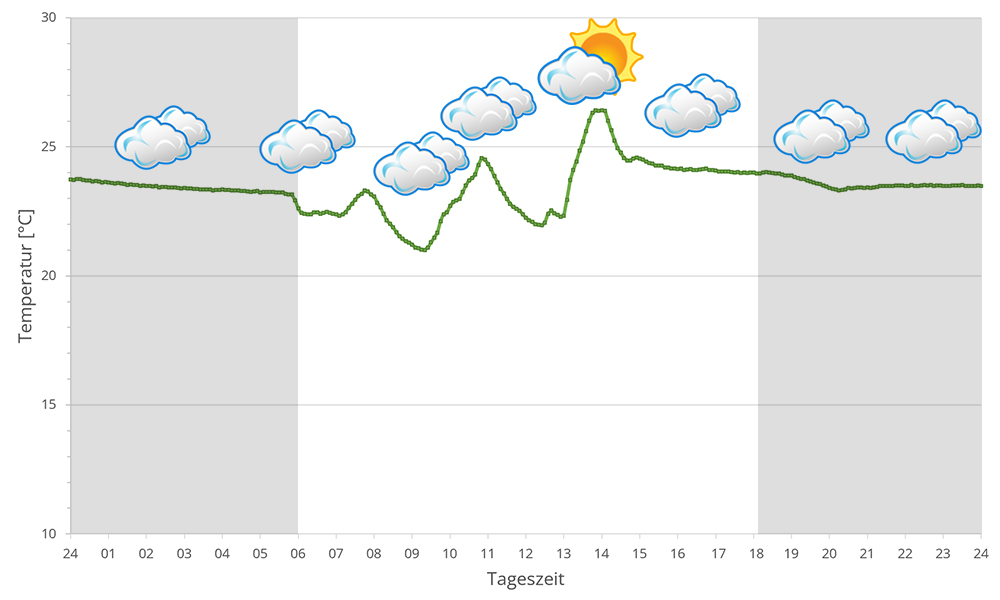
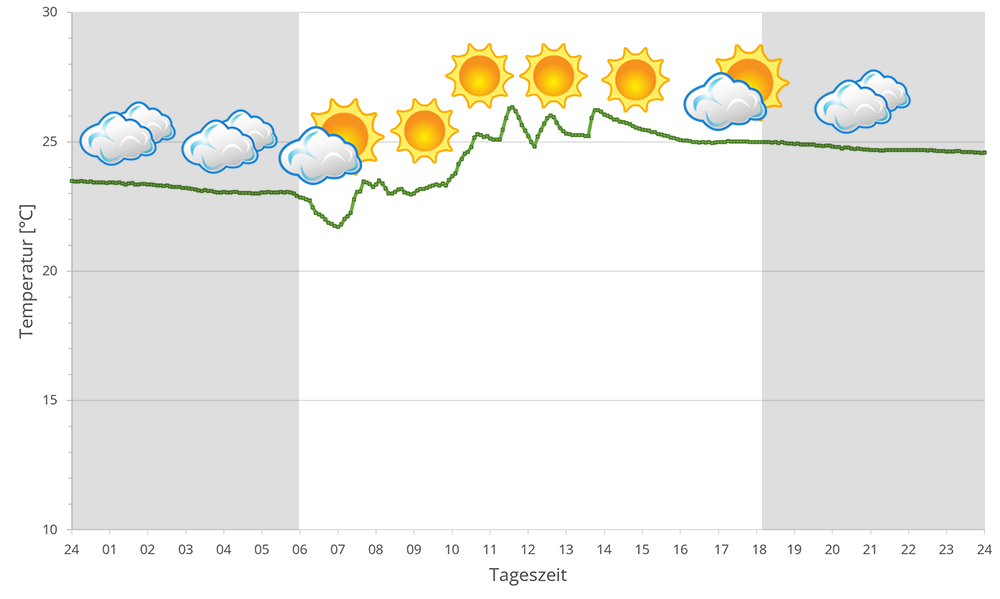

The region around Andasibe with the associated forests of Mantadia, Mitsinjo and Analamazaotra lie in the eastern highlands of Madagascar at altitudes between 900 and 1250 m above sea level. During the day, the temperature may sometimes exceed 25°C, but the thermometer rarely climbs above 30°C, or only in sunspots. At night, temperatures plummet, especially during the dry season. 10° to 15° degrees are the rule.
Humidity in the rainforests around Andasibe is high all year round. During the rainy season it rains extensively every day, sometimes the rain lasts for days. But the dry season is not massively different either, except that it has slightly cooler temperatures overall and reaches lower temperatures at night. It still rains at least every other day. Rain, high humidity and a drop in temperature at night are therefore the central points of Andasibe's climate. In 2023, we measured relative humidity with data loggers on different days in Andasibe in the rainy season, the data can be found below.

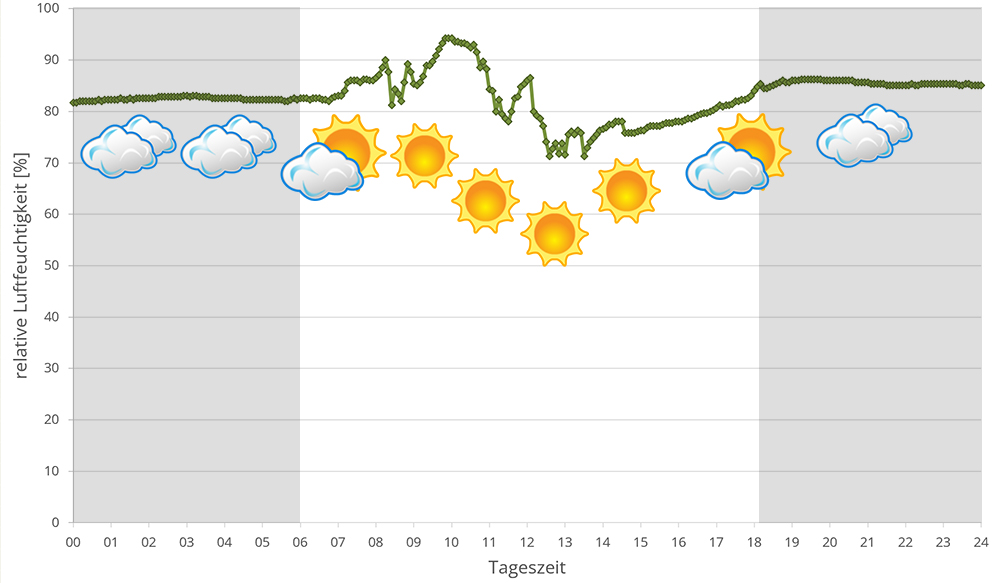
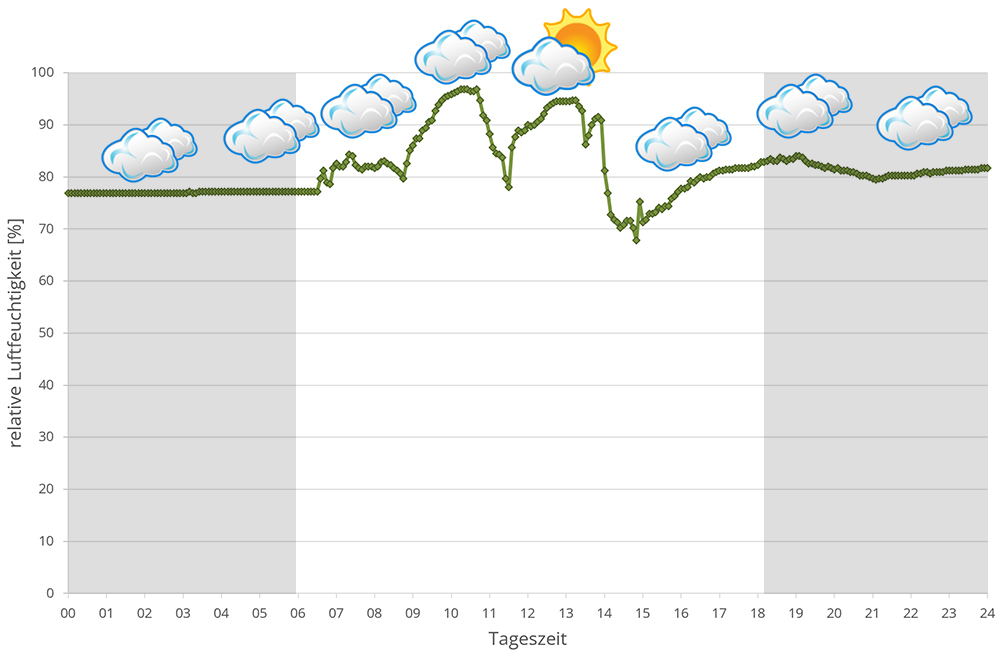

 Tageszeit = day time, Sonne = sun, Halbschatten = half shade, Schatten = shade
Tageszeit = day time, Sonne = sun, Halbschatten = half shade, Schatten = shade
We have measured UVB data with a Solarmeter 6.5 in spring (March, April) at the peak of activity of chameleons in Madagascar. We always measured the values that a chameleon could maximally reach in its habitat.
| Jan | Feb | Mar | Apr | May | Jun | Jul | Aug | Sep | Oct | Nov | Dec | |
| Morning | 23,2 | 23,4 | 22,0 | 22,1 | 20,5 | 16,0 | 16,3 | 16,5 | 17,4 | 16,7 | 21,2 | - |
| Midday | 25,4 | 25,3 | 24,5 | 22,5 | 20,2 | 16,5 | 16,3 | 17,7 | 18,3 | 18,0 | 21,4 | - |
| Evening | 25,5 | 25,1 | 25,0 | 25,3 | 20,8 | 17,2 | 16,1 | 17,0 | 19,6 | 23,0 | 22,0 | - |
Between 21 March 2018 and 05 February 2019, we measured ground temperatures in the rainforest of Andasibe and surrounding areas (Analamazaotra, Andasibe, V.O.I.M.M.A. and Mitsinjo) about every other day - the table is the result of these measurements. Only in December no measurements were taken. detailed review can be found here. In total, we took 418 soil temperature measurements and measured an estimated 70 different locations in Andasibe and the surrounding area at a depth of 20 cm.
In 2023, in addition to other climate data, we also measured the air pressure at the locations we visited in Madagascar. The following data is from different days during the rainy season in Andasibe. On the X-axis is the time of day or night. In Madagascar, the day begins around 6 am, and night falls at 6 pm. The Y-axis shows the atmospheric pressure in hPa.
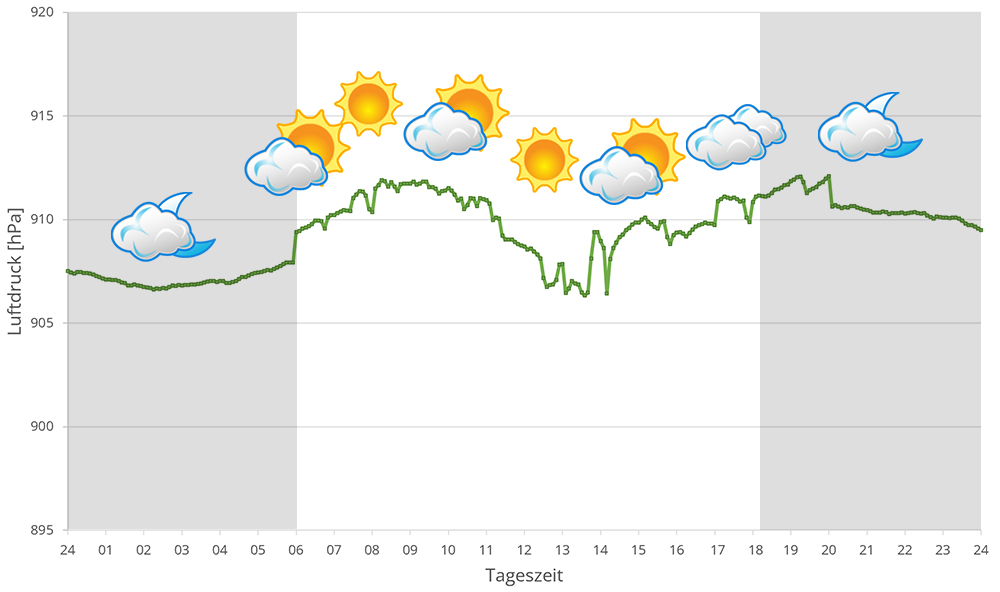
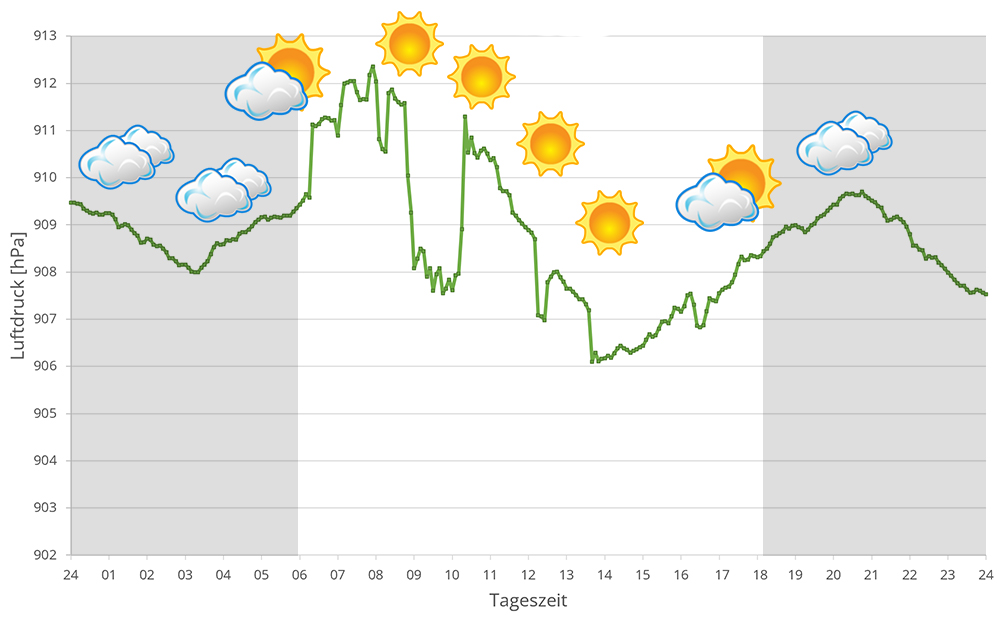

Habitat:
The following photos show parts of the habitat of Calumma hofreiteri in Andasibe, Analamazaotra and Maromizaha. They inhabit thin trees, shrubs and bushes, but also thick lianas in the dense rainforest. Only very rarely they are found in open terrain, they prefer dense foliage and deep rainforest or at least the edges of rainforests.
Below you will find some 360° images of rainforests in the Andasibe region that we took during the rainy season. If you click on the respective image, the pictures will open in an enlarged view in a separate window. You can use the mouse to rotate in all directions. You also have the option of running the images in full-screen mode. Have fun looking at them!


